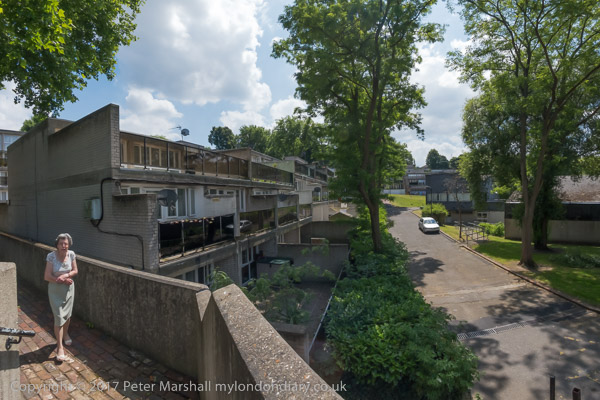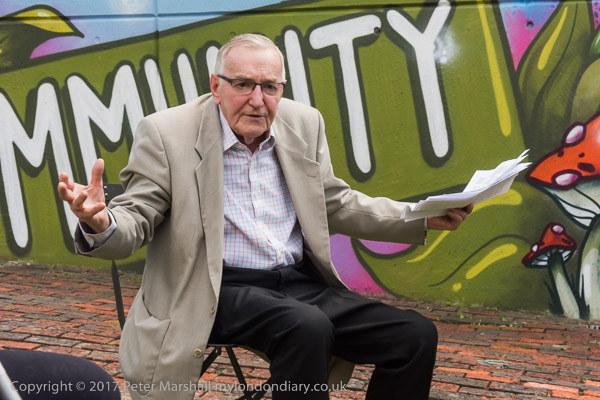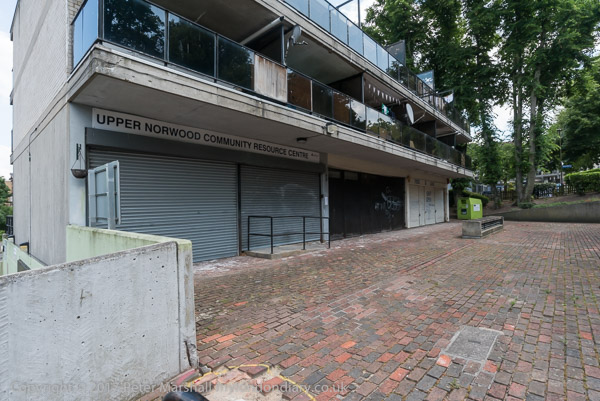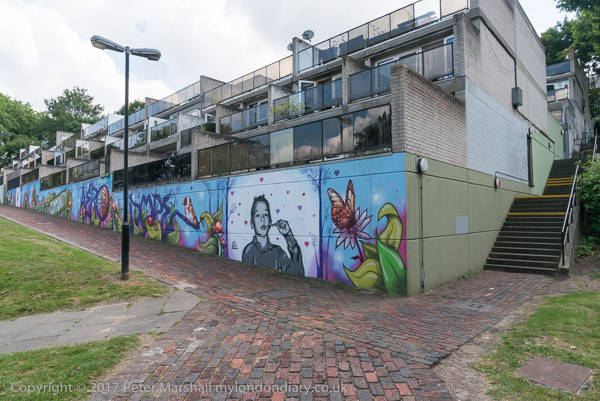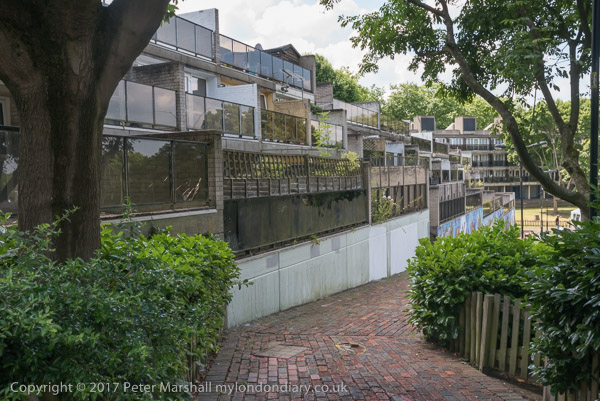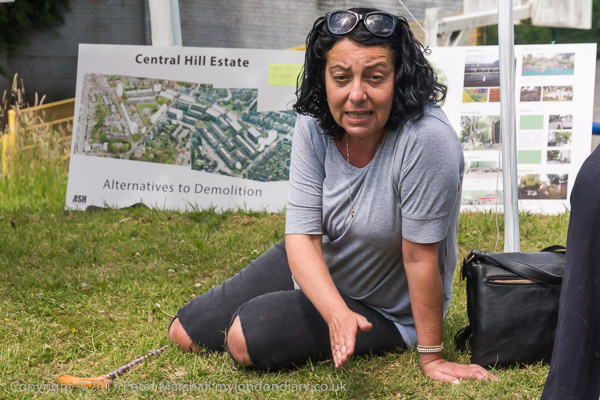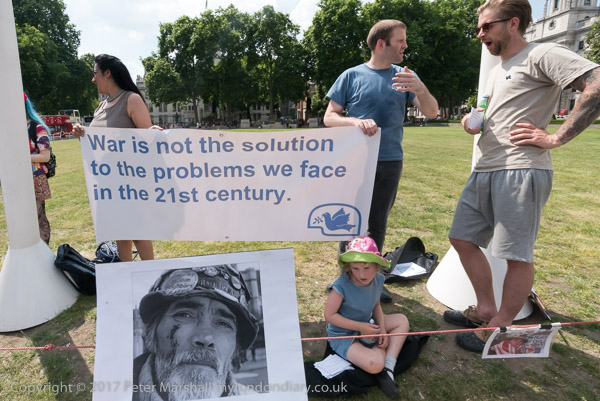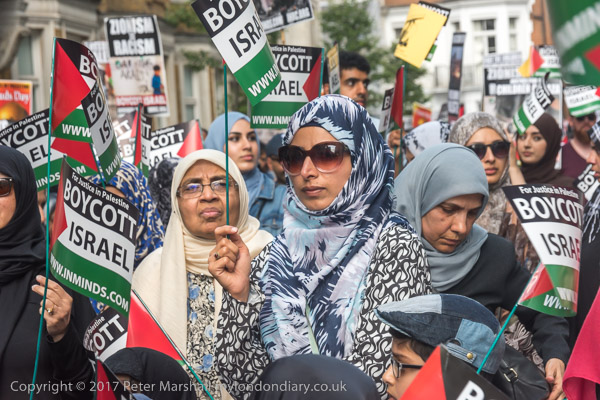Central Hill Estate: Tuesday 2nd February 2016 was a bright winter day in London and i decided to go and take a look – and of course to photograph – the Central Hill Estate on the edge of Lambeth, which I had heard and read much about as Lambeth Coucil weree planning to demolish it.
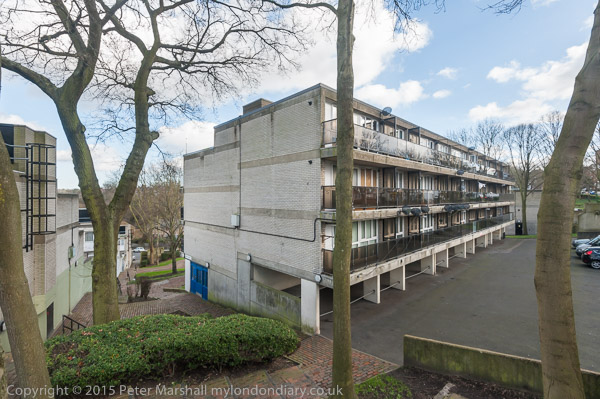
You can read an excellent account of the building of the estate by architect Kate Macintosh on the Twentieth Century Society website, which records the care taken by lead architect Rosemary Stjernstedt (1912-1998) and her team, who had previuosly been head-hunted by Lambeth’s Chief Architect and Planner Ted Hollamby.
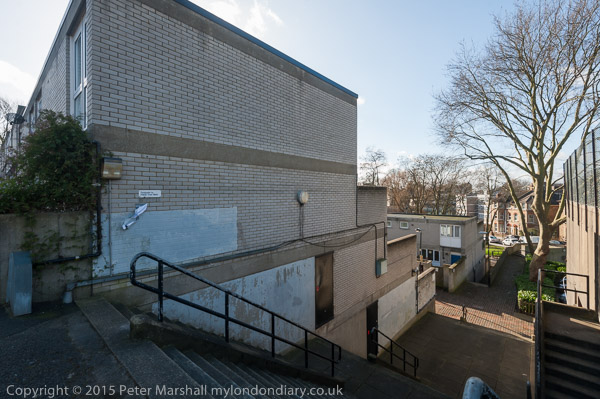
As well as planning to make the most of the steeply descending site with its extensive views across London the plans presevered as many as possible of the existing mature trees and included a Doctor’s group practice, a youth club, an old persons’ day centre and shops, open space, play areas, community buildings and a district heating system.
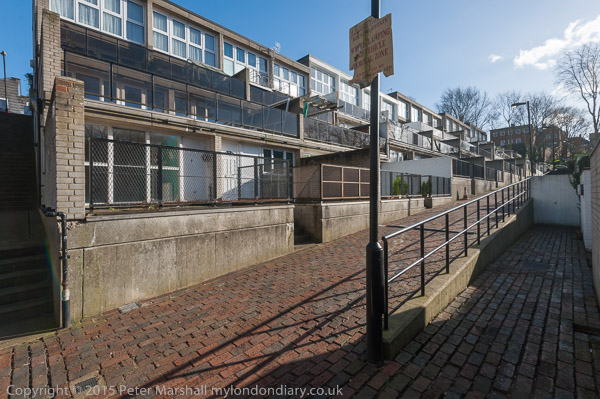
The Twentieth Century Society also supported the two applications for the listing of this site, turned down in 2016 and again in 2021, although the reasons for the refusal seem increasingly spurious and I think based on political pressure rather than architectural evidence.
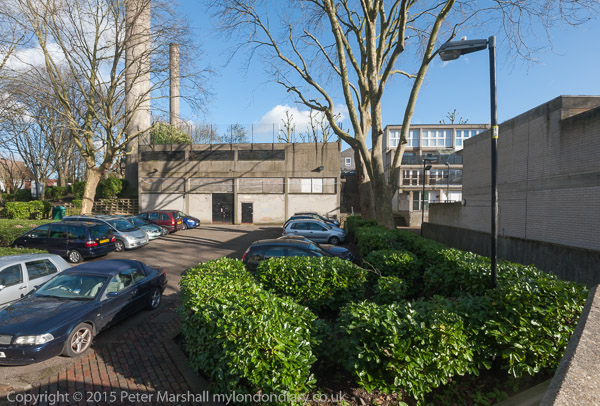
I wrote about it at some length after my visit in February 2016 on My London Dairy and have visited it again on several occasions since, not lease to see the exhibition of alternative plans to meet Lambeth Council’s stated objectives for the demolition and rebuildling by careful and much lower cost development on the existing estate which would retain its essential excellent design.
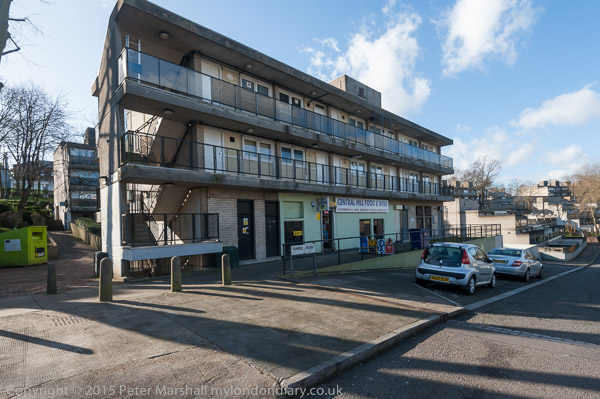
Here I’ll quote a part of what I wrote then, beginning with my introduction.
“There is only one real problem with the Central Hill Estate in Upper Norwood. Which is that the estate, owned by Lambeth Council, was built in an age when architects and planners were proud to design the best they could and councils keen to house their tenants to the highest standards, but it has lasted into an age where government policy aims to get rid of all social housing and councils are out to join developers in profiting from redeveloping with lower standards and higher densities for private sale.”
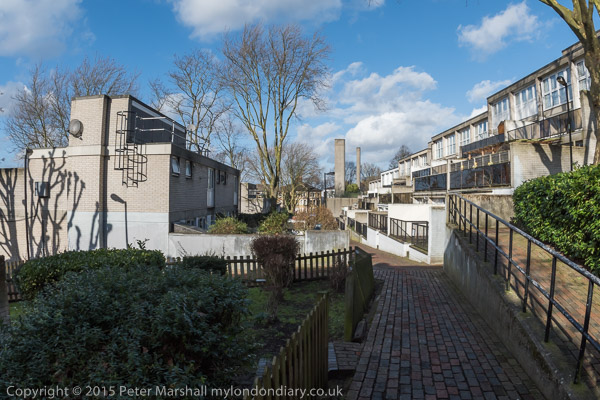
“The whole is on a much more human scale than other large developments of the era, with a design that has proved successful in encouraging community. People like living on the estate and all I talked to when walking around taking pictures were very positive – except for the one council employee who came out from the upper Norwood Community Resource Centre to ask me what I was doing. “
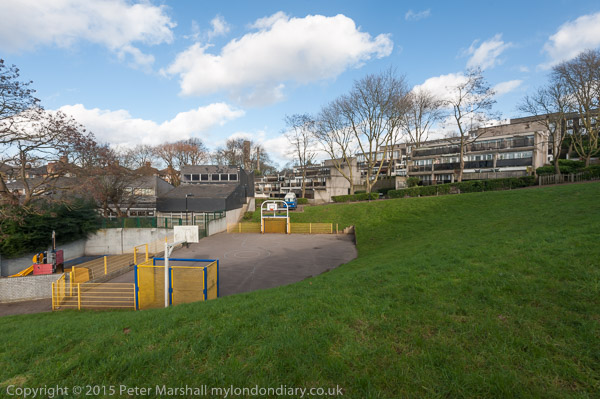
“A survey answered by 150 residents recently found only two in favour of it being demolished. It has been a safe place to live, with below average crime levels – perhaps having the police station at its south-east corner has helped.”
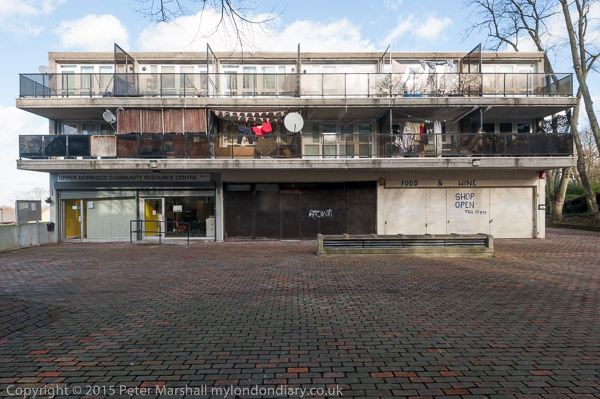
“Like all social housing, the estate has suffered from neglect and poor maintenance, and the properties need refurbishment and bringing up to modern energy standards. Considering the age of the estate the cost per dwelling assessed by Lambeth Council is relatively moderate and only a fraction of that of new building.”
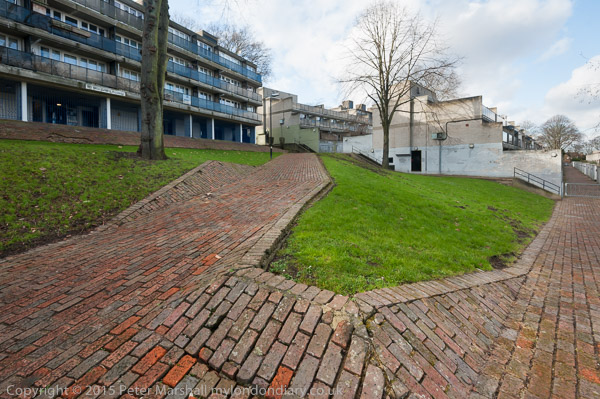
You can read the alternative proposals by Architects for Social Housing – Simon Elmer and Geraldine Dening – prepared for the residents of Central Hill estate between May 2015 and March 2017 in response to the threat of demolition of 456 homes on the estate by Lambeth Labour Council.
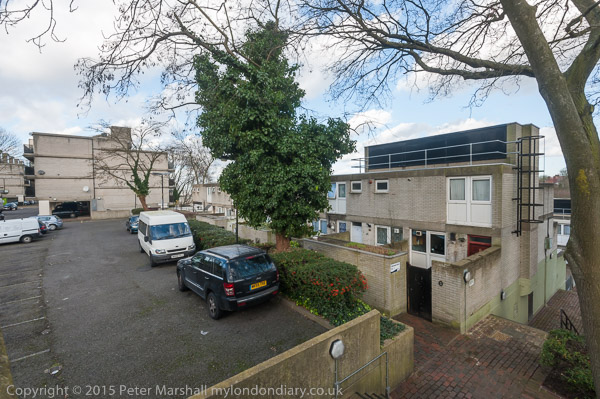
In the introduction to the ASH report they write “However, there is nothing, either in current government legislation or in the housing policies of the Conservative, Labour or Liberal Democrat parties, that will stop councils from following the same practices Lambeth council employed to push through their plans to demolish Central Hill estate against both the wishes of residents and the demonstrable social, financial and environmental benefits of the design alternatives.” Lambeth Council refused to seriously consider their alternative suggestions.
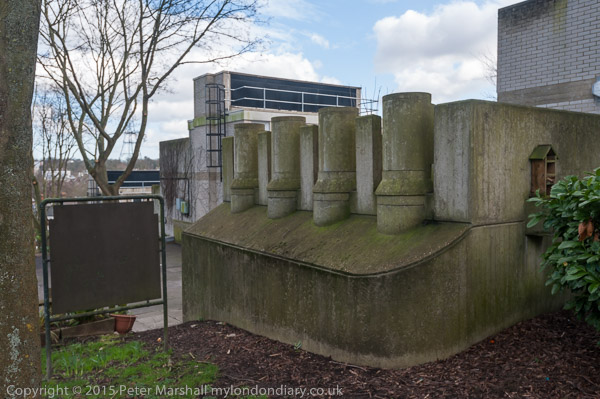
Little has changed since then although we are now much more aware of the environmental impacts of demolition and rebuilding, and some greater lip-service was been paid the the “wishes of residents“, but the changes in planning recently announced by Labour had they been in place back in 2016 would almost certainly have meant that Central Hill would not now still be standing.
The fight to save Central Hill continues, with the Facebook Group ‘Save Central Hill Estate‘.
You can read more and see many more pictures – it was an estate I found hard to stop photographing – at Central Hill Estate.
Flickr – Facebook – My London Diary – Hull Photos – Lea Valley – Paris
London’s Industrial Heritage – London Photos
All photographs on this page are copyright © Peter Marshall.
Contact me to buy prints or licence to reproduce.
